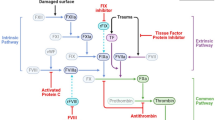Abstract
Purpose. This study was conducted to investigate the impact of backbone modifications on the hepatobiliary disposition of oligonucleotides.
Methods. The disposition of backbone-modified antisense oligonucleotides [phosphorothioate (PS) and methylphosphonate (MP)] of the same base-length and sequence (5′-TAC-GCC-AAC-AGC-TCC-3′), complementary to the codon 12 activating mutation of Ki-ras, was investigated in the isolated perfused rat liver. Livers were perfused for 2 hr; perfusate and bile concentrations were analyzed by HPLC. Hepatocellular distribution was examined by measuring the amount of radiolabeled PS oligonucleotide associated with hepatocytes and Kupffer cells. Protein binding of the PS and MP oligonucleotides was determined in rat serum by ultrafiltration.
Results. MP oligonucleotide perfusate concentrations remained constant during the 2-hour perfusion. In contrast, PS oligonucleotide was eliminated slowly by the isolated perfused liver [Cl = 1.05 ± 0.21 mL/min; extraction ratio = 0.06 ± 0.01]. Uptake of PS oligonucleotide by Kupffer cells appeared to exceed uptake by hepatocytes, based on standard cell separation techniques as well as confocal microscopy. The degree of protein binding in rat serum was greater for the PS oligonucleotide (79.9 ± 2.2%) than for the MP oligonucleotide (53.0 ± 4.7%).
Conclusions. Backbone modifications significantly influence the hepatic clearance of oligonucleotides. Uncharged MP oligonucleotides are not extracted by the isolated perfused rat liver, whereas the charged PS oligonucleotide is processed more readily.
Similar content being viewed by others
REFERENCES
J. Goodchild, S. Agrawal, M. P. Civeira, Ps. Sarin, D. Sun, and P. C. Zamecnik. Proc Natl Acad Sci 85:5507–5511 (1988).
S. T. Crooke. Ann Rev Pharmacol Toxicol 32:329–376 (1992).
J. S. Cohen. Pharmacol Ther 52:211–225 (1992).
P. A. Cossum, H. Sasmor, D. Dellinger, L. Truong, L. Cummins, S. R. Owens, P. M. Markham, J. P. Shea, and S. Crooke. J Pharmacol Exp Ther 267:1181–1190 (1993).
R. Zhang, J. Y. Yan, H. Shahinian, G. Amin, Z. Lu, T. Liu, M. S. Saag, Z. Jiang, J. Temsamani, R. R. Martin, P. J. Schlechter, S. Agrawal, and R. B. Diasio. Clin Pharmacol Ther 58:44–53 (1995).
R. Zhang, H. Lu, H. Zhao, X. Zhang, R. D. Diasio, I. Habus, Z. Jiang, R. P. Iyer, D. Yu, and S. Agrawal. Biochem Pharmacol 50:545–556 (1995).
S. Agrawal, J. Temsamani, W. Galbraith, and J. Tang. Clin Pharmacol 28:7–16 (1995).
R. K. Delong, A. Nolting, M. H. Fisher, Q. Chen, E. Wickstrom, M. Kligshteyn, S. Demirdij, M. Caruthers, and R. Juliano, in press. Anti Res Nucl Acid Drug Develop (1997).
J. A. Hughes, A. V. Avrutskaya, K. L. R. Brouwer, E. Wickstrom, and R. L. Juliano. Pharm Res 12:817–24 (1995).
S. Agrawal, X. Zhang, Z. Lu, H. Zho, J. M. Tamburin, J. Uan, H. Cai, R. B. Diasio, I. Habus, Z. Jiang, R. P. Iyer, D. Yu, and R. Zhang. Biochem Pharmacol 50:571–576 (1995).
C. Almoguera, D. Shibata, K. Forrester, J. Martin, Arnheim, and M. Perucho. Cell 53:549–554 (1988).
S. Agrawal and S Goodchild. Tetrahedon Lett 28:3539–3542 (1987).
J. Sambrook, E. F. Fritsch, and T. Maniatis. Molecular Cloning. A Laboratory Manual. Cold Spring Harbor Laboratory Press, Cold Spring Harbor, NY (1989).
K. L. R. Brouwer and R. G. Thurman. in R. T. Borchardt, P. L. Smith, and G. Wilson (eds.), Models for Assessing Drug Absorption and Metabolism, Plenum Press, New York, 1996, pp. 161–193.
R. L. Hamilton, M. N. Berry, M. C. Williams, and E. M. Severinghaus. J Lipid Res 15:182–186 (1974).
M. Gibaldi and D. Perrier. Pharmacokinetics, Second Edition, Marcel Dekker, Inc. New York and Basel, 1982.
H. Pertoft and B. Smedsrod. In T. P. Pretlow (ed.) Cell Separation: Method and Selected Applications. Vol 4., Academic Press New York, 1987, pp. 1–24.
J. G. Zendegui, K. M. Vasquez, J. J. Tinsley, D. J. Kessler, and M. E. Hogan. Nucl Acids Res 20:307–14 (1992).
R. Zhang, Z. Lu, X. Zhang, H. Zhao, R. B. Diasio, T. Liu, Z. Jiang, and S. Agrawal. Clin Chem 41:836–843 (1995).
H. Sands, L. J. Gorey-Feret, A. J. Cocuzza, F. W. Hobbs, D. Chidester, and G. L. Trainor. Molec Pharmacol 45:932–943 (1994).
Author information
Authors and Affiliations
Corresponding author
Rights and permissions
About this article
Cite this article
Nolting, A., DeLong, R.K., Fisher, M.H. et al. Hepatic Distribution and Clearance of Antisense Oligonucleotides in the Isolated Perfused Rat Liver. Pharm Res 14, 516–521 (1997). https://doi.org/10.1023/A:1012116003706
Issue Date:
DOI: https://doi.org/10.1023/A:1012116003706




